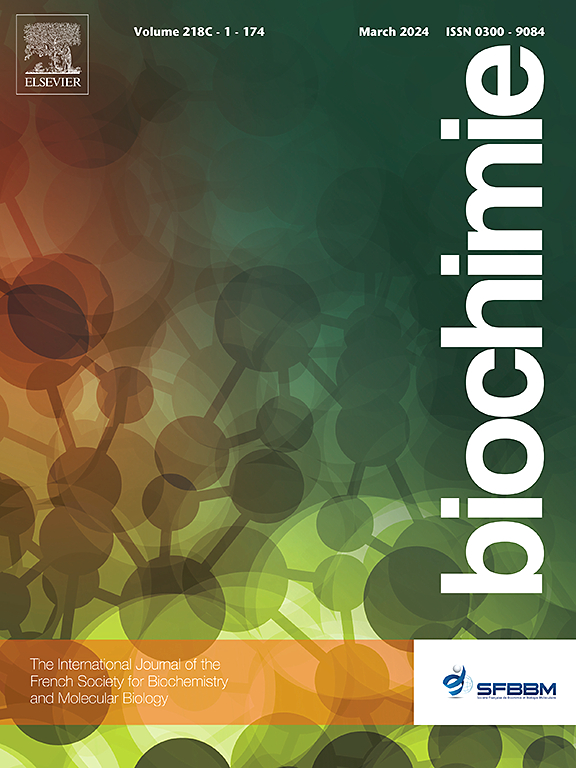凝血酶在肠道中的故事
IF 3.3
3区 生物学
Q2 BIOCHEMISTRY & MOLECULAR BIOLOGY
引用次数: 0
摘要
近年来,许多研究表明蛋白酶参与了肠道生理和病理生理学。其中,凝血酶长期以来一直是一个老角色,只参与组织损伤后的血液凝固。事实上,凝血酶受体(蛋白酶激活受体-1 和-4)在肠道几乎所有细胞类型中都有表达和功能,对屏障、免疫或运动功能有贡献,这表明凝血酶实际上可能处于肠道生理的十字路口。最近的研究揭示了肠上皮细胞会持续释放活性凝血酶,为凝血酶在肠道中的作用开辟了新的研究途径。本综述将探讨这些作用以及凝血酶在肠道中的调节作用。本文还讨论了凝血酶作为肠道病变治疗靶点的潜力。本文章由计算机程序翻译,如有差异,请以英文原文为准。
Thrombin stories in the gut
Many studies have demonstrated the involvement of proteases in gut physiology and pathophysiology over the recent years. Among them, thrombin has appeared for a long time as an old player only involved in blood clotting upon tissue injury. The fact that thrombin receptors (Protease-Activated Receptors-1 and -4) are expressed and functional in almost all cell types of the gut, contributing to barrier, immune or motility functions, suggested that thrombin could actually be at the crossroad of intestinal physiology. Recent work has unraveled the constitutive release of active thrombin by intestinal epithelial cells, opening new research avenues on the role of thrombin in the gut. These roles are considered in the present review, as well as the regulation of thrombin in the gut. The potential of thrombin as a target for treatments of intestinal pathologies is also discussed here.
求助全文
通过发布文献求助,成功后即可免费获取论文全文。
去求助
来源期刊

Biochimie
生物-生化与分子生物学
CiteScore
7.20
自引率
2.60%
发文量
219
审稿时长
40 days
期刊介绍:
Biochimie publishes original research articles, short communications, review articles, graphical reviews, mini-reviews, and hypotheses in the broad areas of biology, including biochemistry, enzymology, molecular and cell biology, metabolic regulation, genetics, immunology, microbiology, structural biology, genomics, proteomics, and molecular mechanisms of disease. Biochimie publishes exclusively in English.
Articles are subject to peer review, and must satisfy the requirements of originality, high scientific integrity and general interest to a broad range of readers. Submissions that are judged to be of sound scientific and technical quality but do not fully satisfy the requirements for publication in Biochimie may benefit from a transfer service to a more suitable journal within the same subject area.
 求助内容:
求助内容: 应助结果提醒方式:
应助结果提醒方式:


